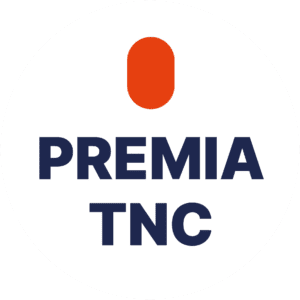Internal controls aren’t just for large corporations. Learn how small businesses in Taiwan can build a simple yet effective internal control system to manage risks, improve efficiency, and ensure compliance.
Why Small Businesses Need Internal Controls
Small and medium, sized enterprises (SMEs) often focus heavily on sales, customer acquisition, and cash flow in their early years. While this is natural for survival, neglecting governance and internal structures can leave serious gaps. Without proper checks and balances, SMEs in Taiwan are vulnerable to:
- Inefficient operations
- Financial mismanagement
- Fraud or misuse of assets
- Compliance and regulatory risks
An internal control system provides the foundation for transparency, accountability, and efficiency. It is not limited to large, publicly listed companies—SMEs need it just as much. In fact, for small businesses looking to expand, especially in Taiwan. attract investors, apply for grants, or even prepare for an IPO, a solid control framework is essential.
In short: internal controls protect business resources today and prepare companies for sustainable growth tomorrow.
Key Components of an Internal Control System (SME-Friendly Approach)
The globally recognized COSO framework identifies five major components of internal control. Below is a simplified version tailored to small businesses in Taiwan:
1. Control Environment
- Define roles and responsibilities clearly with simple job descriptions.
- Create a code of conduct and ethical guidelines.
- Leadership must set the tone, demonstrating integrity and accountability.
2. Risk Assessment
- Identify operational and financial risks (e.g., cash handling, inaccurate reporting).
- Assess their potential impact on business goals.
- Prioritize controls for high-risk areas first.
3. Control Activities
- Establish approval levels for payments, purchases, and contracts.
- Separate financial duties: those handling cash should not manage accounting records.
- Require supporting documentation for all disbursements and claims.
- Use dual authorization for large transactions or sensitive assets.
4. Information & Communication
- Maintain consistent reporting (income statements, cash flow summaries, receivables aging).
- Encourage open communication between management and staff to ensure procedures are followed.
5. Monitoring Activities
- Management should regularly review financial reports and system performance.
- Engage external consultants or accountants periodically for independent reviews.
- Conduct asset counts (inventory, cash, fixed assets) to verify accuracy.
Pro tip: Even with a lean team, SMEs can scale internal controls to match their size. Start simple, then expand as the business grows.
8 Guiding Principles for SMEs to Build Effective Controls
In addition to COSO’s five elements, SMEs in Taiwan can adopt these practical governance principles:
- Clear job duties – Put responsibilities and authority in writing to avoid overlaps.
- Separate cash and accounting – The person managing money should not record the books.
- Control cash flow strictly – Deposit revenues promptly, use checks or transfers for payments, and require dual authorization for disbursements.
- Periodic reconciliations – Regularly check inventory, assets, and cash against records.
- Job rotation and leave – Cross-train staff and rotate duties to uncover irregularities.
- Hire for integrity – Prioritize ethics and honesty in recruitment.
- Whistleblowing mechanism – Provide a confidential, anonymous channel for reporting misconduct to reduce risks of management override.
- Monitoring activities – Regularly review controls, and when needed, engage external experts for audits or evaluations.
These principles ensure internal controls remain practical, cost-effective, and enforceable for small organizations.
5 Practical Steps to Kickstart Internal Controls in SMEs
If you’re wondering where to begin, here are five actionable steps to get started immediately:
- Set Up an Expense Approval Workflow
Example: Any expense above USD$500 requires supervisor approval and full documentation. - Track Cash Flow and Transactions
Use simple tools like Excel or Google Sheets to maintain daily logs. Transparency builds trust. - Standardize Contracts and Quotations
Ensure only authorized personnel approve client quotes or contracts to prevent unauthorized commitments. - Generate Monthly Financial Reports
Start with income statements, cash flow summaries, and accounts receivable reports to guide decisions. - Conduct Periodic Reviews
Whether internally or with an external accountant, schedule reviews to catch errors, fraud, or compliance issues early.
When Internal Controls Become Especially Critical
Internal controls are always beneficial but they become absolutely critical in the following situations:
- Seeking investors or strategic partners – A transparent system increases credibility.
- Applying for government grants or subsidies – Clean financial records are often mandatory, especially with Taiwan’s government initiatives for SMEs.
- Business expansion or new hires – Growth creates complexity and risk.
- Cross-border transactions – Additional legal and tax compliance requirements apply.
Whenever your business in Taiwan touches outside capital, regulators, or larger teams, internal controls shift from optional to essential.
Recommended Internal Control Documents for SMEs
Even with limited resources, SMEs in Taiwan can establish a basic paper trail that formalizes governance:
Document Type | Purpose |
Internal Control Policy Manual | Defines roles, approval authority, and key procedures |
Reimbursement & Expense Forms | Standardizes reporting and approval for expenses |
Financial Report Templates | Simplifies monthly income, cash flow, and receivables reports |
Audit Checklist | Guides internal self-reviews or external assessments |
These documents don’t need to be sophisticated, clarity and consistency are more important than length.
Conclusion: Governance as a Growth Mindset
For SMEs in Taiwan, good governance is not bureaucracy—it’s a growth enabler. An internal control system helps protect assets, improve efficiency, and strengthen stakeholder trust.
The key is to start small and scale gradually:
- Define roles clearly.
- Track and approve transactions consistently.
- Build accountability into everyday operations.
By embedding internal control practices into your business culture, you create a resilient foundation for expansion, financing, and long-term success.
Ready to Build a Custom Internal Control Framework?
We help small and growing businesses design scalable internal control systems that fit their industry and stage of growth. From quick diagnostics and policy templates to hands-on consulting—we’re here to support your governance journey.




